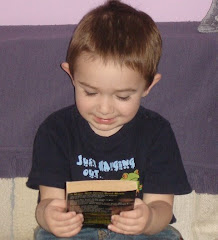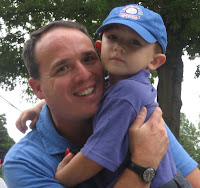Long Island
Autumn 1989
Her harried request had gone quickly ignored. Slowing down was the last thing on the mind of this particular driver who had Taken to the Highway at a now excessive rate of speed in an effort to catch up to a tour bus in a simulated chase scene resembling something straight out of Smokey and the Bandit.
 “You
don’t even know if it’s their bus,” she continued desperately.
“You
don’t even know if it’s their bus,” she continued desperately.Mine was not to reason with a white knuckled, soon to be ex-girlfriend in the passenger seat, but let’s face it. How many other tour buses bearing the mural of a runaway stagecoach could possibly be traveling this same stretch of highway headed in the direction of a venue slated to host a Marshall Tucker Band concert later that same evening? I put the pedal to the metal and tailed the bus to a motel parking lot. Listening to the dull rumble of its engine now idling only a few feet in front of me, I waited patiently for someone to emerge.
“They’re probably trying to reach the police on their CB radio right now, I’ll bet. Maybe they think you’re a stalker,” she chastised. “Or some type of crazed fan.”
I ignored her and watched the bus with an eagle eye. The silence and inactivity were broken after several minutes when a non-descript grey Chevy pulled up alongside. A relatively clean cut individual wearing glasses and dressed in a black polo shirt and jeans stepped out and approached the car.
“Can I help you?” He offered in an accent that clearly said he was not from around here.
As I began to relate a rather long winded tale of my very tenuous third party connection with the band in question and my hope to briefly introduce myself to its lead singer, he quickly interrupted.
“I’m Doug Gray,” he said laughing.
I was humiliated. How could this average guy, wearing glasses no less be the same one that had helped to propel the Marshall Tucker Band to unimaginable heights for nearly two decades? Why wasn’t he on the bus partying like a rock star? It was an unsettling realization when I quickly came to understand that that part of his life was likely long behind him. Mentally doing the math in my head, I figured he had crested the big 4-0 by now, which could likely account for the glasses as well. In a showing of true southern hospitality right there on Long Island’s
Sitting in my
Midtown office awaiting a phone call from the very same individual who was
instrumental in shaping the soundtrack of my life, I thought back to that first
awkward meeting almost 25 years in my past and realized that it was not merely
an act of kindness on his part, but a philosophy, an attitude that continues
today and is a true contributing factor to the longevity and staying power of a
band that began its journey in Spartanburg, South Carolina in 1972. Now
celebrating their 40th anniversary, Marshall Tucker founding member
Doug Gray admits, “It is truly strange. Being an original member and knowing
where we came from… I know the guys; some of whom are no longer on this earth
would be extremely happy that all of it is still going on.”
 Perhaps the pinnacle of that
excitement was recently reached when the band was invited to appear on the stage of
Perhaps the pinnacle of that
excitement was recently reached when the band was invited to appear on the stage of
“There’s actually no words. These
people welcomed us with open arms. Here I was walking into a place that Hank
Williams Sr. had played and had to beg to
get on there!”
The Opry may seem an odd venue for a
band that falls more into the category of classic rock, but it’s tough to pin
just one label on their music. The Marshall Tucker Band were forerunners during
the great southern rock era of the 1970’s, but unlike many of their
counterparts offering up lengthy jams and blistering guitar solos, their music
also infused a blend of blues, jazz, country and pop. One of the songs the band
is most known for is the monster 1977 hit, Heard
It in a Love Song. Gray remembers the tune being in the vault for nearly a
year before putting his vocal stamp on it.
 “I had some kind of mental block with
that song and came up with every excuse not to do it. There were so many other
great songs that Toy Caldwell had written and personally I just did not like
this one. I’m an old rhythm and Blues singer and now I’m gonna sing this pop
tune?”
“I had some kind of mental block with
that song and came up with every excuse not to do it. There were so many other
great songs that Toy Caldwell had written and personally I just did not like
this one. I’m an old rhythm and Blues singer and now I’m gonna sing this pop
tune?”
Four
minutes and one take later a hit record was born; something that the singer
still finds bewildering.
“All of a sudden it was being played
all over the country and now I have Toy joking around telling me, ‘well buddy, I guess you’ll be singing that
for the rest of your life.’ It’s not a bad song, but for me it just never
had the impact of something like Take the
Highway or Can’t You See.”
In 1972 the band entered Macon
Georgia’s Capricorn Recording Studio to lay down tracks for their first album and
unknowingly made rock and roll history.
“Toy came up one day and said, ‘write this down for me real quick.’ He
used to do that all the time and I would find a piece of paper and scribble on
it. He starts singing this song to me, ‘Can’t
You See, Can’t You See, what that woman,’ He wanted me to sing the song
originally, but that wasn’t my voice. It’s too smooth. His was gruff and it was
like he was testifying, almost like the little old man at the gospel church
that just all of a sudden belted something out that shook the world.”
Not far from the truth, Can’t You See became iconic and has been
covered countless times by artists including Waylon Jennings , Alabama
“It was wonderful to have that happen,
but I still find it hard to believe. I mean look at Lynyrd Skynyrd,” he says
laughing. “They got all the songs, all the hits.”
For More than four decades now, Doug
Gray has been blessed with the opportunity to continue a dream that began with
him and five boyhood friends, and while he makes it a point at each and every
performance to publicly thank fans for that honor, his gratitude runs far
deeper. Recently the band mounted a major relief effort to aid many of the
victims of Super Storm Sandy. Collecting clothing, supplies and more than 1500
blankets, several trucks were dispatched to our area from their Spartanburg,
South Carolina home.
 “You know the Northeast has given us
so much right from the very beginning. Had this been the original band we would
have done exactly the same thing. I mean think about it. How many times in our
lives are we ever gonna be able to appreciate and give something back?”
“You know the Northeast has given us
so much right from the very beginning. Had this been the original band we would
have done exactly the same thing. I mean think about it. How many times in our
lives are we ever gonna be able to appreciate and give something back?”
Today the Marshall Tucker Band tours
relentlessly, playing to standing ovations and sold-out shows not just around
the country, but in many places around the world. On several occasions they
have journeyed to Iraq to show their support and play for the troops. Things
seem to be coming back around full circle for Gray and fans as well. In 1976
the original members toured Europe for the first time. Several shows were
recorded and plans had been set in motion to release a live album shortly
afterwards. Their contract with Capricorn Records was due to expire however,
causing a 27 year delay in seeing those tracks released. Stompin’ Room Only finally saw the light of day in 2003, allowing
fans of yesterday and today a true glimpse into the peak of their career. This
month the current incarnation will travel to Switzerland to play the International Country Music Festival in
Zurich where tape will roll yet again.
 “It
was always about the music, always about the songs and always about the fans.
Right now things are really meshing again and I’ve got some of the greatest
musicians in the world in this band. Our personality as a group continues to
touch people now as it did when we first started out. Every night I go out
there and know the audience still feels the music as much as I do because
they’ve shared so much with us. What a tribute that is to the writing and
career that we put together.”
“It
was always about the music, always about the songs and always about the fans.
Right now things are really meshing again and I’ve got some of the greatest
musicians in the world in this band. Our personality as a group continues to
touch people now as it did when we first started out. Every night I go out
there and know the audience still feels the music as much as I do because
they’ve shared so much with us. What a tribute that is to the writing and
career that we put together.”
With
no thought of slowing down the band continues to work on new music as well,
which will undoubtedly be released somewhere down the road. Marshall Tucker
returns here in March playing shows in the tri-state area, Pennsylvania
and Maryland with plans to double back in the summer sharing the stage with
good friends the Charlie Daniels Band.


“And how can I slow
down,
When I can’t stop
running…”
How Can I Slow Down
From the album Where We All Belong
(1974)





No comments:
Post a Comment